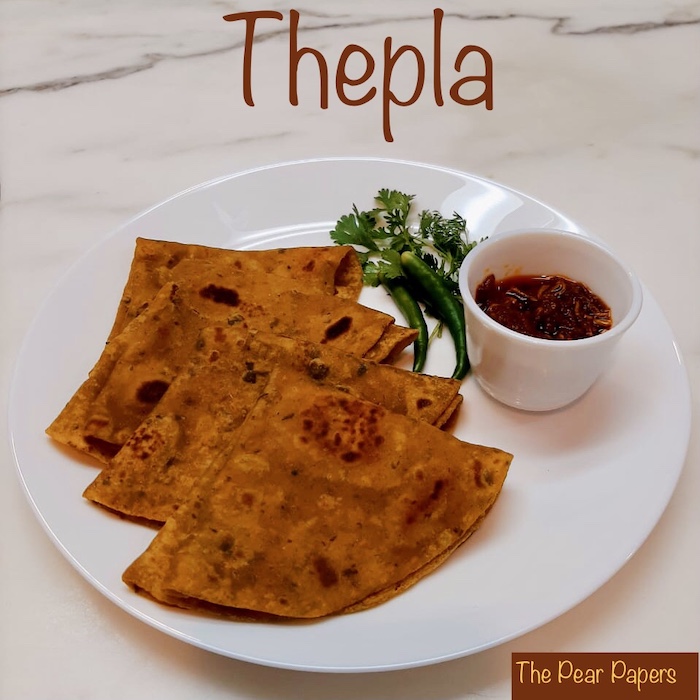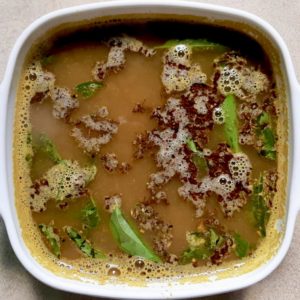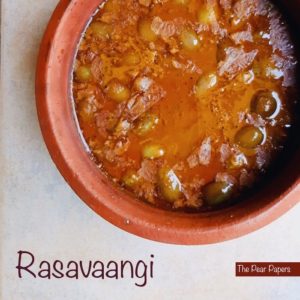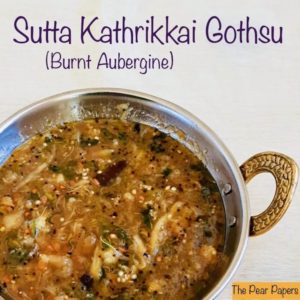
Thepla
Thepla is a flavourful, Indian flat bread, originally from the state of Gujarat. It is very easy to make and stays fresh for nearly 4 to 5 days without refrigeration. For the same reason, it is an ideal dish to take for picnics and small trips.
Being pure vegetarians, whenever we go on any trip (outside India), food becomes one important thing to plan in advance. During such times, theplas come in handy to carry and I make theplas for the entire family. Also, the addition of millet flour along with whole wheat flour takes care of a reasonable amount of nutrition requirement during travel, when we miss home cooked nutritious meals. Just these theplas and plain yoghurt is enough for a meal when we travel.
I learnt to make theplas from my cousin’s mother in law (she lives in Gujarat) and I’m thankful to her, for sharing this wonderful, traditional Gujarati recipe.
Ingredients
Whole wheat flour – 1 1/2 cups
Pearl millet flour (bajra flour) – 1/2 cup (optional) (see notes)
Carom seeds (ajwain) – 1 tsp
Salt – 1/2 tsp (or to taste)
Sugar/jaggery powder – 1 tbsp
Red chilly powder – 1 tsp (or to taste)
Turmeric powder – 1/2 tsp
Green chillies – 2
Ginger (chopped) – 1 tbsp
Fresh coriander leaves (chopped) – 4 tbsp
Garlic (chopped) – 1 tsp (optional)
Onion (chopped) – 2 tbsp
Fresh fenugreek leaves – 4 or 5 tbsp (note )
Ghee/oil – 3 tbsp for the dough + 3 tbsp for cooking the theplas
Plain yoghurt – as required
Yield
10 to 12 Theplas
Prep time
10 mins to prep ingredients
10 mins to make the dough
45 mins dough resting time
Cook time
30 mins
Method
1) Take green chillies, ginger, coriander leaves, garlic, onion, salt and sugar/jaggery powder in a mixer/grinder and grind to a fine paste without adding water. (If you are not able to run the mixer without water, then add a tablespoon of plain yoghurt and grind). Set aside.
2) In a wide bowl take the flours, carom seeds, red chilly powder, turmeric powder, fresh fenugreek leaves and 3 tbsp of ghee/oil. Mix well. Add the ground paste to this and mix again.
3) Now start adding plain yoghurt little by little to the wheat flour mixture to bring it to a dough consistency. Knead the dough for nearly 3 to 4 mins to enable all the ingredients to blend well with the flours and to form a soft, pliable dough (see Note 5).
4) Apply oil on the top surface of the dough, keep it in a greased bowl, cover and allow it to rest for 45 mins.
5) After 45 mins, heat a flat pan/tawa, and grease the pan with a drop of ghee.
6) From the rested dough, pinch a lime sized portion and with a rolling pin, roll it into thin theplas. (Use wheat flour to dust the surface where you are rolling out the theplas).
7) When the pan is medium hot, place the rolled out thepla on it and cook the first side. Cook until you see small bubbles on top of the thepla. Now flip the thepla using a flat spatula. Allow this side also to cook for nearly 30 secs. Again flip the thepla, smear some ghee over the surface and around the edges. Press the thepla gently on all sides with the spatula.
8) When you see small golden colour dots/patches on both sides of the thepla, remove from the pan and place it in a hot pack, lined with a clean kitchen cloth (if you are not serving immediately). Cover the thepla with a cotton cloth.
9) Continue to cook all the theplas similarly. Serve thepla with plain yoghurt/raitha/pickle/dhal tadka, or just fried green chillies. Just plain thepla without any accompaniment also tastes great and is ideal to take on long trips.
Notes
- You can use dried fenugreek leaves (kasuri methi) if you don’t have fresh leaves.
- The amount of oil/ghee can be reduced to 1 tbsp (instead of 3 tbsp), while kneading the dough, if you are going to consume the theplas immediately. Adding more ghee/oil helps keep theplas fresh for longer.
- If you don’t have pearl millet flour, then you can use only wheat flour. Don’t add water to knead the dough, use only yoghurt and ghee/oil to make the dough. This way the theplas stay soft and fresh for a longer time.
- If you have slightly sour yoghurt, you can use that too, instead of fresh yoghurt.
- To know if the dough you’ve made is of the right consistency, roll a small portion of the dough between your palms. It you are able to roll out a smooth ball, then the dough is perfect. If cracks form, then the dough is slightly dry, so add little more yoghurt and knead. Or if the dough is sticky, then add little more wheat flour to absorb the excess moisture.
- Rest the dough for a minimum of half an hour but you can leave it for 2 or 3 hours also.
- Cook the theplas on medium heat only. If the pan is too hot then the theplas might burn easily because it is rolled out thin. If the pan is not hot enough, then the theplas will become dry and hard.


You May Also Like

Healthy Rasam
November 26, 2019
Rasavaangi
February 27, 2022